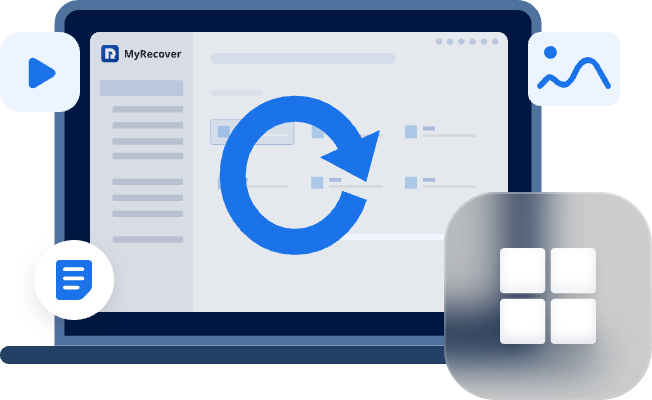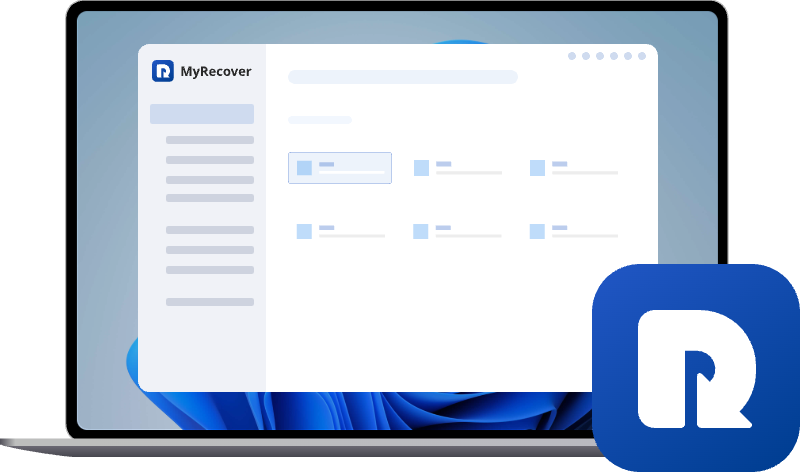Screen Recorder Deleted Video Recovery: Fix It in 5 Minutes
Losing a recorded video can be frustrating, especially after capturing important gameplay, tutorials, or meetings. This article provides a fast and beginner-friendly guide to recovering deleted or lost screen recorder videos in five minutes or less.
Can I Recover Deleted Screen Recording Videos?
When you see precious moments while playing games on Windows or mobile devices, you may record them using the built-in screen recording tool. Screen recoding can help capture special moments such as video chats, presentations, or teaching. However, like other video files like MOV, they are also prone to data loss if not saved properly. You may wonder: Can I recover deleted screen recording videos?
Fortunately, deleted screen recordings are often not gone forever. In many cases, you can restore them using built-in recovery options, cloud backups, or professional recovery tools. Before diving into methods, remember: stop saving new files to the same location where the recordings were stored. New data could overwrite your deleted videos, making screen recorder deleted video recovery more difficult.
How to Recover Deleted Screen Recording Videos on Windows
When a screen recording is deleted on Windows, it isn’t always lost immediately. The system and connected services offer multiple ways to retrieve your lost videos. Whether you have backups or not, you can find a method that suits you. Below are several proven methods.
Check the Recycle Bin
The first and easiest place to check is the Recycle Bin. When you delete (not permanently delete) a file or a folder on Windows, it typically goes there first instead of being permanently erased. You can restore the screen recording videos before the Recycle Bin is emptied.
Step 1. Double click on the Recycle Bin icon to open it on your desktop.
Step 2. Browse through the deleted items and select the files you wish to recover.
Step 3. Right click on them and choose "Restore" to return them to their original location.
If the deleted files don't appear in the Recycle Bin, this may be because they have been permanently deleted. If you have ever created a backup, you can still restore the lost screen recording videos from the backup.
Restore Your Files with File History
If you have enabled File History on Windows before the data loss, Windows will automatically back up your files, including videos saved in specific folders. You can restore the folder or file to previous versions even though it's deleted.
Step 1. Locate the folder or drive with lost screen recording videos in the File Explorer.
Step 2. Right click on it and choose "Restore previous versions" from the context menu.
Step 3. Then a list of versions will be displayed. Choose a desired one and click "Restore" to recover it.
Check Your Cloud Backup
If you sync your screen recording videos to cloud storage like OneDrive, Google Drive, or Dropbox, your screen recordings might still exist in your online backup or the service’s trash folder. This is one of the safest and most convenient ways to achieve screen recorder video recovery, especially if you work across multiple devices.
Step 1. Sign in to your OneDrive account (take OneDrive as an example here).
Step 2. Locate the "Recycle bin" section and look for the deleted video.
Step 3. If find it, select it and click "Restore" in the upper left corner to retrieve it.
Even if they are permanently deleted locally, the Recycle bin of cloud backup tools will retain the deleted files for about 30 days. Act quickly to retrieve them before they are permanently removed.
Use Windows File Recovery
If the screen recording has been permanently deleted and no backups are available, is it impossible to retrieve the video like this? Of course not, you can also try Windows File Recovery—a professional data recovery tool provided by Microsoft, which can help retrieve permanently deleted files from hard drives, SSDs, and external storage.
Step 1. Download and install Windows File Recovery on your computer from Microsoft Store.
Step 2. Locate Windows File Recovery in the Start menu and run it as administrator.
Step 3. Enter the following command "winfr E: F: /extensive /n *.mp4" and hit "Enter" key. Replace the drive letters "E" and "F" with your actual drive letters.
- Notes:✎...
- E: the source drive letter.
- F: the destination drive letter.
- /extensive: the scan mode. You can switch to "regular" mode to perform a quick scan.
- /n *.mp4: the filter command. Only recover the files with "mp4" extension.
Wait for the scan to complete. You can check the recovered files in the destination folder path by pressing "y".
While Windows File Recovery is often effective when files have been recently deleted, it is not very user-friendly for most novice users, because some minor mistakes such as typos and missing spaces can lead to data recovery failure. Users who know nothing about this need to spend a lot of time learning professional knowledge about command lines.
Professional Screen Recorder Deleted Video Recovery Tool—MyRecover
If you're seeking for a user-friendly recovery tool, MyRecover comes highly recommended. MyRecover’s intuitive interface makes screen recorder deleted video recovery simple even for non-technical users. Moreover, it handles various complex data loss scenarios like data recovery from deleted partition, formatted hard drive, emptied Recycle Bin, crashed system (only available for paid versions).

- Broad Compatibility: It supports file recovery on storage devices such as SSDs, HDDs, SD cards, and USB drives.
- High Reliability: During the recovery process, it only reads data without writing, avoiding data overwriting.
- Versatile Recovery Capability: It can cover various complex data loss scenarios, such as recover from inaccessible partition, partition deletion, hard disk formatting, system crashes, and more.
- Comprehensive Scan: You can run quick scan to recover data quickly, or choose Deep Scan to retrieve more data from fragmented clues.
Step 1. Download and install MyRecover on your computer from Microsoft Store, avoid installing it on the drive with lost screen recordings.
Step 2. Launch MyRecover and select the drive including the lost files to scan, then click "Scan".
Step 3. Choose the files you wish to recover from the recoverable lists and click "Recover".
Step 4. Select a safe location (not the original one) to save the recovered files.
When the process is finished, you'll see the message "Files have been recovered successfully", then you can access the recovered files by clicking on the destination folder path or "Browse" button.
How to Recover Deleted Screen Recoding Videos on Mobile
If your screen recording was made on a smartphone, don’t worry, both iPhone and Android devices offer built-in and third-party recovery options. Below are detailed methods for each.
On iPhone
✅Check the "Recently Deleted" Folder
When you delete a screen recording from the Photos app, it moves to the Recently Deleted folder for 30 days. It should be noted that, unlike the Windows Recycle Bin, the "Recently Deleted" on iPhone mobile devices only retains deleted photos and videos for 30 days.
Step 1. Open the Photos app and scroll down the "Recently Deleted" folder.
Step 2. Choose the screen recording you want to recover and click "Recover".
✅Recover with MyRecover for iOS
If the 30-day retention period has expired, the files will be permanently removed. In such cases, MyRecover for iOS can rescue your files. It can recover deleted voice recordings, photos, contacts, WeChat history and more types of iPhone data.
Step 1. Download and install MyRecover for iOS on your computer.
Step 2. Connect your iPhone to the computer with a correct cable and trust the computer on the iPhone.
Sep 3. Launch MyRecover for iOS and click "Scan Now" to start the recovery process.
Step 4. Choose the files you attempt to recover from the recoverable lists and click "Recover" in the upper right corner.
On Android
Similar to iPhones, Android phones like Samsung, Xiaomi or Huawei also keep deleted pictures or videos including screen recordings in the "Recently Deleted" or "Trash" folder for up to 30 days. Follow these steps to recover them:
Step 1. Open Gallery app on your phone.
Step 2. Locate to the "Recently Deleted" folder and look for the screen recordings.
Step 3. Select videos you want to recover and tap "Restore".
Summary
Losing a valuable screen recording can feel devastating, but as you’ve seen, there are many ways to recover it, whether it’s through built-in tools like Recycle Bin and File History, cloud backups, or professional utilities like MyRecover.
For the most comprehensive and reliable solution, consider upgrading to MyRecover Professional edition. It allows unlimited data recovery, lets you preview files before restoring, and can even create a recovery disk to boot your computer and recover files. Whether you’re performing data recovery on a PC or iPhone, MyRecover gives you the best chance to get your lost recordings back quickly, safely, and completely.


